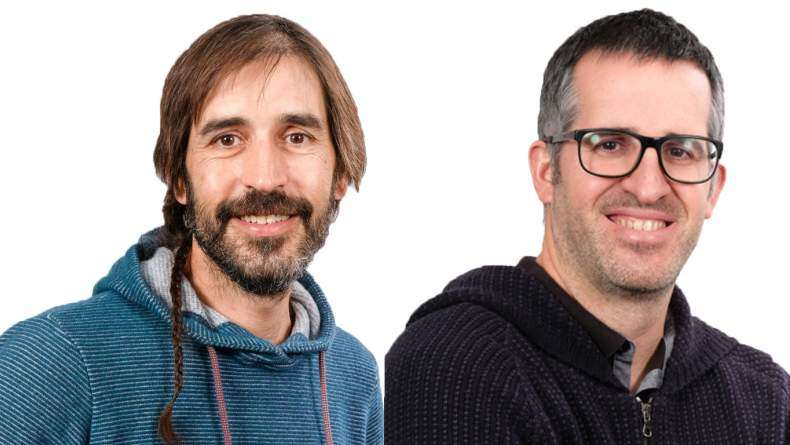BCMaterials Fortnightly Seminars #23

“Lattice anomalies at the ferroelectric and magnetic transitions in cycloidal Mn0.95Co0.05WO4 and conical Mn0.80Co0.20WO4 multiferroics”
Irene Urcelay Olabarria
(BCMaterials)
Different types of subtle lattice anomalies (Dl/l ∼ 10−5) are reported in the multiferroic Mn1−xCoxWO4 (x = 0.05 and 0.20) compounds coinciding with the successive magnetic transitions below 30 K. Clearly different magnetoelastic effects at the ferroelectric transition (TFE = TN2) were observed for Mn0.95Co0.05WO4 (single-k pure cycloidal order below TFE) andMn0.80Co0.20WO4 (double-k conical order below TFE). The different lattice evolution across TFE results from a distinct relative orientation of the magnetic easy axis and the spiral plane. Whereas both are parallel in Mn0.95Co0.05WO4, the spiral plane is perpendicular to the easy axis in Mn0.80Co0.20WO4.
“Polyanionic Materials as Cathodes for Na-ion Batteries”
Verónica Palomares
(UPV/EHU)
Na-ion batteries are considered one of the most promising energy storage systems for a near post-lithium future. In order to make these batteries come true, every battery component (electrodes, electrolytes, separator) must be optimized to obtain the best possible performance. Research work on polyanionic structures as cathode materials has been intense in the last 5 years. Many reasons support this fact: they possess high operating voltages (due to the inductive effect), there are several known structures that could bear Na ion extraction/insertion, and there exists previous knowledge from Li-ion batteries on some of them.
This contribution gathers the main polyanionic compounds signaled as possible cathodes for Na-ion batteries, with the most relevant advances on them. These materials will be analyzed in terms of energy density (operating voltage and specific capacity), easiness or preparation, morphology affecting electrochemical performance, the need of conductive coatings… This way a general view of the different materials that can be chosen as electrode for a Na-ion battery will be given, pointing out which could be the next steps involved in the research of this type of materials.
Related news
María Calles, New Doctor of BCMaterials
We would like to congratulate María Calles García for obtaining her PhDs in Materials Science and Technology from the UPV/EHU. On December 4 made a brilliant defense of her thesis titled ‘Chelating…Invited Talk with Barcelona Microelectronics Institute’s researchers (December 3)
On December 3 at 12:00 PM, in the Martina Casiano Auditorium in Leioa, BCMaterials will host senior researchers Antón Guimerà and Xavier Illa from the Barcelona Microelectronics Institute (IMB-CNM,…Invited Talk by Liu Yao on Lithium-Metal Batteries (December 2)
Next Monday, December 2, Liu Yao, professor at the Shanghai Institute of Applied Physics, will give an invited lecture at BCMaterials entitled ‘Li-Metal Batteries: From Liquid to Solid-State’. The…Success of BCMaterials’ Annual Workshop on Critical Materials
The 2025 edition of BCMaterials’ annual workshop gathered nearly one hundred participants on November 19 in Leioa to review the latest advances and discuss critical materials, their applications, and…



